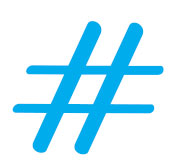[:en]
We don’t bat an eyelid anymore when someone takes a photo of themselves in a public place. Selfie-sticks, aka Naricissticks, have become the new normal.. Estimates of daily selfie posts range from one million to as high as 93 million on Android devices alone, according to Michael Weigold of the University of Florida. (http://businesstech.co.za)
Yes, it’s sometimes irritating and obtrusive, but surely it’s just a bit of harmless fun?
Quite the opposite seems to be true in some cases.
In February tourists in Argentina removed an endangered baby La Plata dolphin from the sea to take pictures of themselves with it. The animal died from sheer trauma and heat exhaustion.
In March a tourist dragged a swan from a lake in Macedonia to take a selfie. Again the animal died.
The selfie trend not only endanger the lives of animals, but also humans. (though some of these might qualify for the Darwin awards)
In 2015 Russia launched a campaign to warn its population against the dangers of selfies, called “A cool selfie could cost you your life.” The reason? Apparently an estimated hundred Russians have died trying to take photos of themselves in dangerous situations. This includes a woman shooting herself, two men blowing themselves up with a hand grenade and people taking pictures on top of moving trains.
India also has a rising selfie problem, with more citizens dying while taking selfies than any other country in the world. Mumbai now has “no-selfie zones.”
In Seville, Spain, a Polish tourist fell of a bridge while trying to take a selfie. In May of 2014 a Cessna pilot lost control of the plane and killed himself and all his passengers.
On Tuesday an Egyptian Airline plane was hijacked and a British man used the opportunity to take a selfie with the hijacker. He reckoned he had nothing to lose at that stage. Today another Brit had to be rescued from Britain’s highest mountain, Ben Nevis. She was trying to take a selfie on the mountain and was inadequately dressed for the cold conditions. More on selfie-related deaths on CNN.
What would drive a person to risk endangering himself for the sake of a “cool”photo?
Maybe the need to constantly prove and compare ourselves to other people? Social media provides an easy platform where almost instant feedback and possibly approval is given.
Michael Weigold of the University of Florida published an article in The Conversation, in which he explores this question. He also mentions research done by psychologist Gwendolyn Seidman.
Dr Seidman suggests that there is a link between narcissism and selfies and she bases her statement on two studies looking specifically at Facebook selfies. Read dr Seidman’s article in Psychology Today and decide for yourself. Also let us know what you think of selfies and why you think they are so popular?
[:af]
Die selfie is so algemeen, ons merk nie eers meer op as iemand in die openbaar `n foto neem met `n selfie-stok, of te wel, `n Naricisstick, nie. Volgens Michael Weigold, van die Universiteit van Florida, word beraam dat daagliks tussen een miljoen en 93 miljoen selfies geplaas word met Android-fone alleen. (http://businesstech.co.za)
Ja, dit is soms irriterend en indringerig, maar dis tog net onskuldige pret?
Die teenoorgestelde blyk waar te wees in sommige gevalle.
Vanjaar in Februarie is `n bedreigde La Plata babadolfyntjie in Argentinië dood as gevolg van trauma en hitte-uitputting, omdat `n groep toeriste selfies daarmee op die strand wou neem.
In Maart gryp `n toeris `n swaan uit `n meer in Macedonië vir `n selfie en kort daarna beswyk dit.
Selfs al is jy nie `n dierliefhebber nie, bedreig die selfie ook menselewens (hoewel ‘n paar van hierdie gevalle dalk kwalifiseer vir Darwin-toekennings?)
In 2015 loods Rusland `n veldtog om te waarsku teen die gevare van selfies — “A cool selfie could cost you your life”. Inderdaad.
Blykbaar is `n honderd Russe reeds dood as gevolg van selfies. Dit sluit `n vrou in wat haarself per ongeluk geskiet het, twee mans wat hulle misgis het met `n handgranaat en ander wat waaghalsig bo-op bewegende treine poseer het.
In Seville, Spanje, het `n Poolse toeris van `n brug geval terwyl sy `n selfie wou neem. In Mei 2014 verloor `n Cessna-loods beheer oor sy vliegtuig en verongeluk homself en sy passasiers — vir `n selfie.
Dinsdag is `n Egyptian Airline-vliegtuig gekaap en `n Britse man het die geleentheid aangegryp om `n selfie saam met die kaper te neem. Hy’t gereken hy’t in elk geval niks om te verloor nie.
Gister moes `n Britse vrou gered word vanaf Brittanje se hoogste berg, Ben Nevis, omdat sy nie behoorlik toegerus was vir die weertoestande toe sy `n selfie wou neem nie. Meer oor selfie-verwante sterftes op CNN.
Wat dryf iemand om homself in gevaar te stel om bloot `n “cool” foto te neem?
Dalk die behoefte om onsself te bewys en vergelyk met ander? Met sosiale media is dit net soveel makliker om te doen en dadelik kommentaar en reaksie te kry.
Michael Weigold van die Universiteit van Florida het `n artikel in The Conversation publiseer waar hy hierdie vraag ondersoek. Hy verwys ook na navorsing deur die sielkundige Gwendolyn Seidman.
Dr Seidman beweer dat daar `n skakel tussen narsissisme en selfies is en baseer haar navorsing op twee steekproewe wat fokus op Facebook-selfies. Lees gerus dr Seidman se artikel in Psychology Today en besluit self. Laat weet ons wat jy dink van selfies en hoekom jy dink dis so populêr?
[:]


 Before social media a hashtag or the octothorp was only a symbol on a phone button we never used. Those days are long gone.
Before social media a hashtag or the octothorp was only a symbol on a phone button we never used. Those days are long gone.